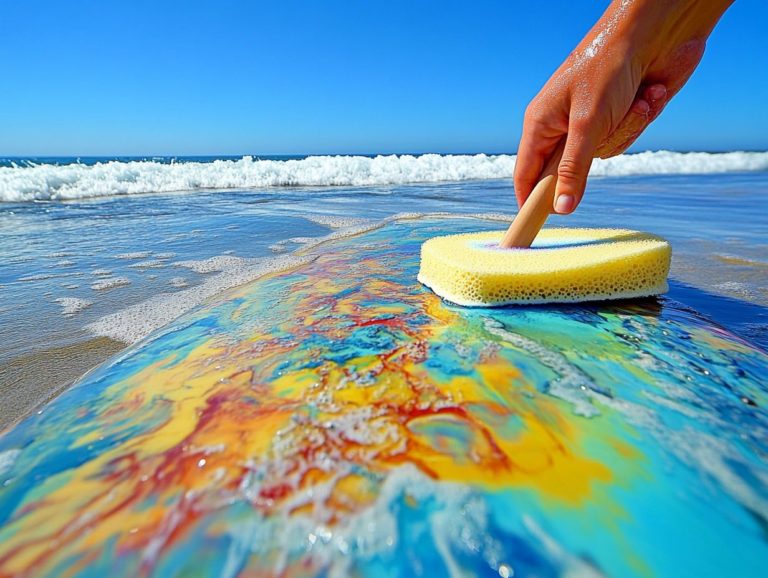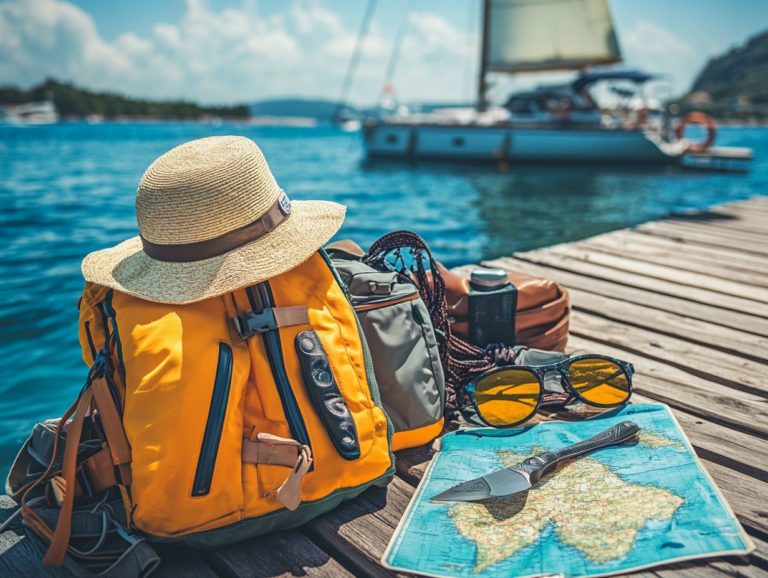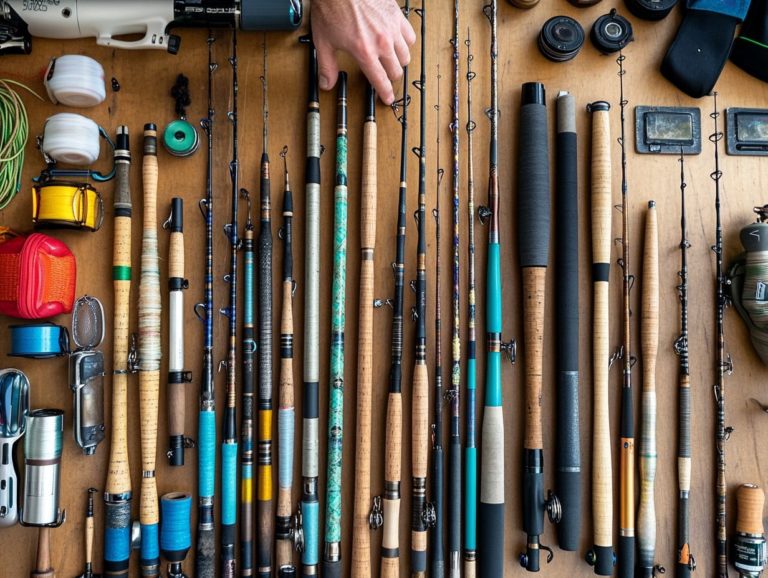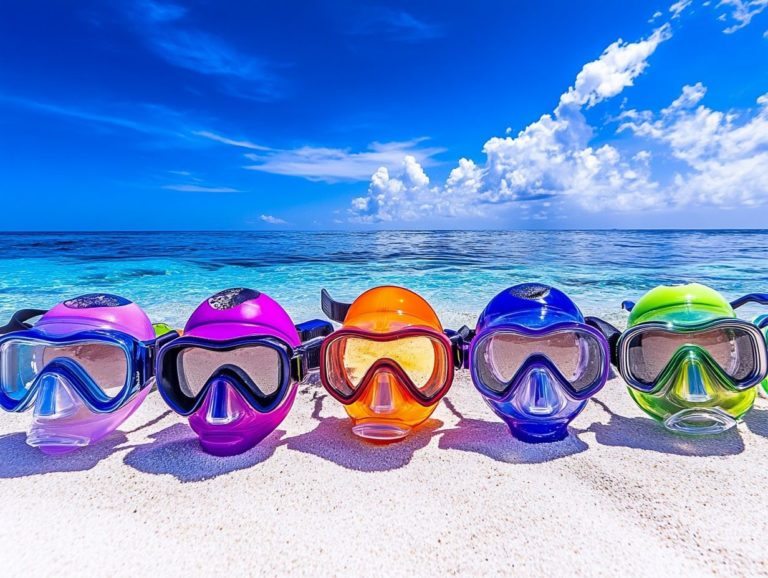5 Essential Items for Your Scuba Diving Kit
Planning a scuba diving adventure? Your gear can make or break your experience! Ensuring you have the right gear is essential for a safe and enjoyable time beneath the waves.
This article outlines the five must-have items that should be in your scuba diving kit, ranging from masks and snorkels to regulators and wetsuits. It also emphasizes the importance of safety gear, precautions, and guidance on selecting the right sizes. Learn about common mistakes to avoid when putting your kit together!
Dive in and discover how to equip yourself for your next underwater escapade!
Contents
- Key Takeaways:
- 1. Mask and Snorkel
- 2. Fins
- 3. Wetsuit
- 4. Dive Computer
- 5. Regulator Set
- What Is the Importance of Having a Proper Scuba Diving Kit?
- What Are Some Other Recommended Items for Scuba Diving?
- How Can One Properly Maintain Their Scuba Diving Equipment?
- What Are the Safety Precautions to Take When Using Scuba Diving Equipment?
- How Can One Choose the Right Size and Fit for Their Scuba Diving Equipment?
- What Are Some Common Mistakes to Avoid When Assembling a Scuba Diving Kit?
- Frequently Asked Questions
Key Takeaways:
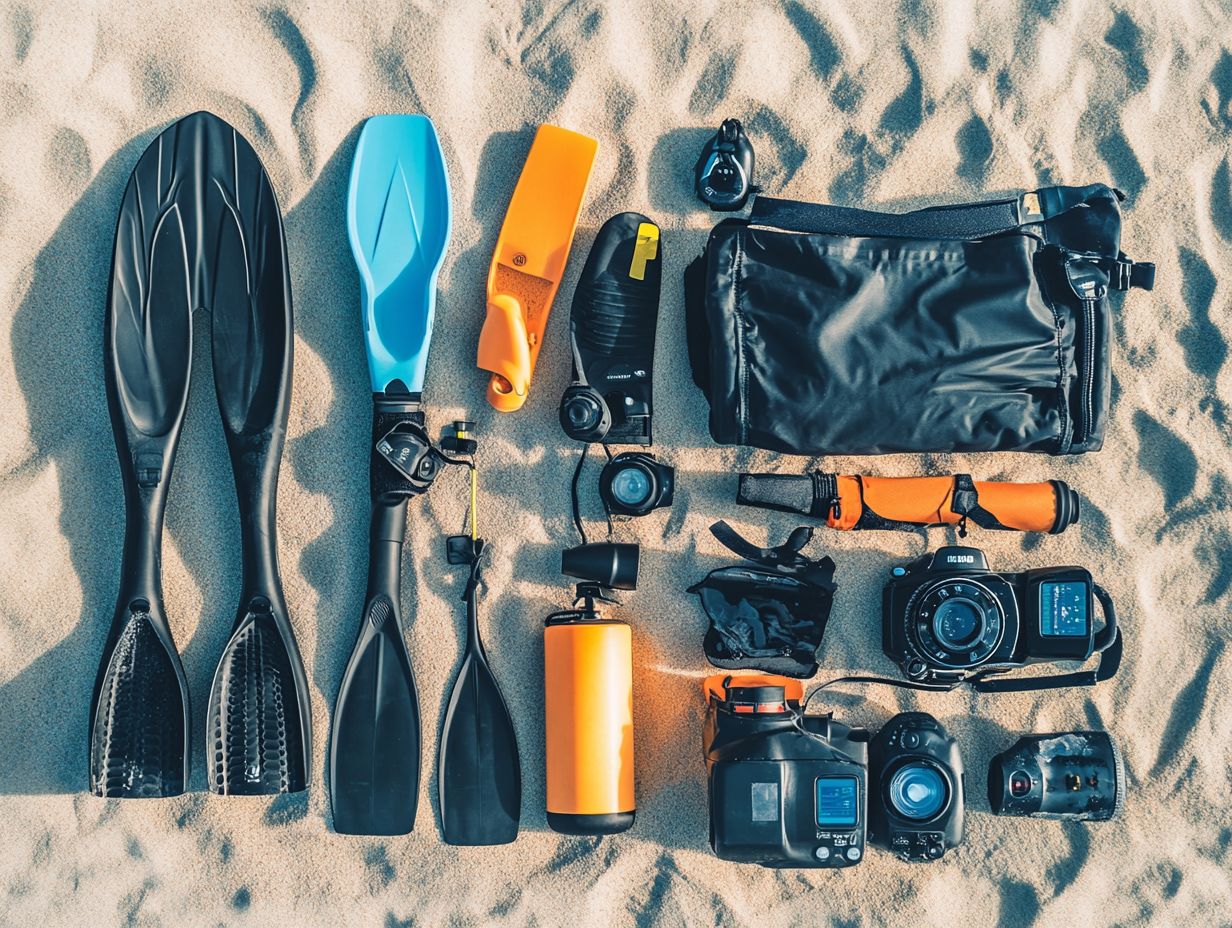
- A mask and snorkel are a must-have for clear vision and breathing while scuba diving!
- Fins provide propulsion and maneuverability, making them crucial for a smooth diving experience!
- A wetsuit keeps you warm and protects against scrapes and stings from marine life!
1. Mask and Snorkel
A quality mask and snorkel set is absolutely essential for your scuba diving adventures. Get ready for a crystal-clear view of the mesmerizing underwater world! It allows you to breathe effortlessly while gliding at the surface or during shallow dives.
Selecting the right mask can significantly enhance your overall experience. Various types of masks are available, from single lens to dual lens designs, each offering distinct comfort and visibility features. A well-fitting mask ensures a snug seal against your face, preventing any pesky water from sneaking in.
Your visibility greatly hinges on the lens material, with tempered glass often being the go-to choice for clarity. Don t overlook the importance of a comfortable mouthpiece; it can transform extended snorkeling into a truly enjoyable experience!
If you’re in the market for a new mask, choose one that fits your specific face shape. This enhances the seal and improves your underwater navigation, letting you immerse yourself fully in the vibrant marine life that surrounds you.
2. Fins
Dive fins are essential for enhancing your propulsion and maneuverability underwater. They enable you to move efficiently while optimizing your visibility and conserving energy.
When choosing between full-foot and open-heel designs, consider how significantly this choice affects your comfort. Full-foot fins offer a snug fit, perfect for warm waters, while open-heel fins accommodate booties, making them ideal for colder conditions.
Selecting the right type of fin boosts your comfort and influences your control and agility during various diving scenarios. A proper fit minimizes fatigue and enhances your responsiveness, allowing you to fully immerse yourself in your underwater adventures!
3. Wetsuit
A wetsuit is essential for your scuba diving experience. It provides warmth and comfort, keeping you warm in cooler waters while ensuring you can move freely.
You ll find various types of wetsuits tailored to different diving conditions think full suits, shorties, and even hooded versions for chillier dives. The material thickness can range from 2mm for warmer waters to 7mm or more for frigid depths.
A well-fitted wetsuit significantly enhances your safety by minimizing heat loss and protecting against scrapes or stings from marine life. This thoughtful choice fosters a more enjoyable experience overall!
Selecting the appropriate wetsuit for your specific conditions doesn t just impact your comfort; it also boosts your confidence, allowing you to fully immerse yourself in your underwater adventures!
4. Dive Computer
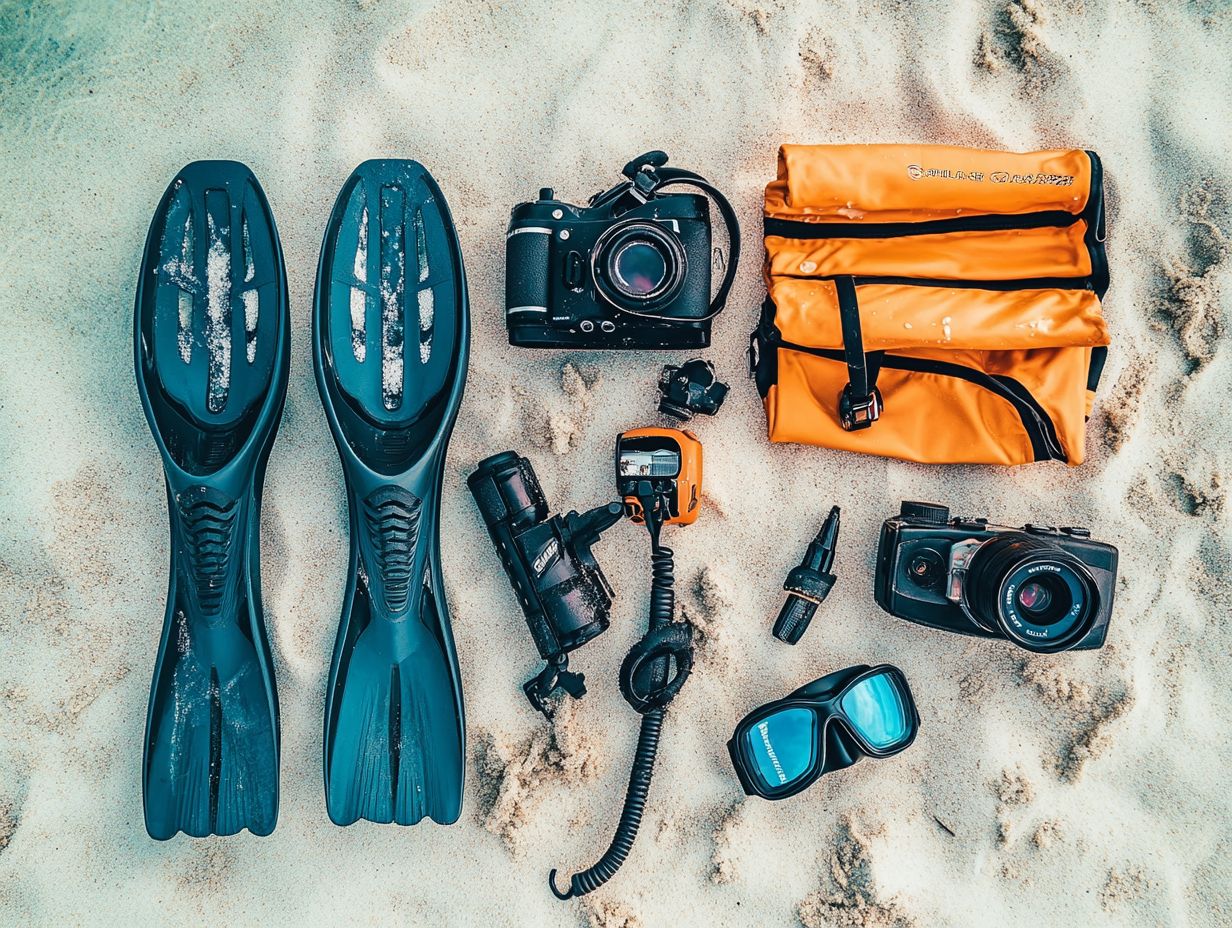
A dive computer is an essential companion for your scuba diving adventures. It provides real-time data on depth, time, and decompression limits. Decompression limits are the maximum depths and times you can dive without needing to stop during your ascent to avoid decompression sickness. This invaluable tool significantly boosts your safety and enhances your underwater navigation.
These advanced devices typically feature a user-friendly interface, often with large, easy-to-read displays that present crucial information at a glance. Many models are designed to integrate seamlessly with various diving gear, including tank sensors and dive watches. This connectivity enables you to monitor your dive profiles with precision, efficiently tracking your ascent rates and remaining bottom time. Ascent rates refer to how quickly you rise to the surface after a dive, which is vital for safety.
The benefits of using a dive computer instead of traditional dive tables are substantial. A dive computer dynamically adjusts decompression schedules based on your actual dive profile, minimizing the risk of decompression sickness and allowing you to fully enjoy your underwater experience.
5. Regulator Set
A reliable regulator set is your safety lifeline in scuba diving. It allows you to breathe easily and securely from your oxygen tank while optimizing airflow and pressure regulation beneath the waves.
Many diving enthusiasts tend to overlook the intricate components of this essential equipment. However, they can significantly enhance your underwater experience. The regulator set is typically comprised of two main stages:
- The first stage connects directly to your scuba tank, expertly reducing the high-pressure air to an intermediate pressure.
- The second stage delivers the air at a lower pressure, ensuring a smooth and effortless inhale.
This thoughtful design gives you the power to manage your breathing comfortably, even at varying depths. You must regularly maintain and test your regulators to ensure safety. By ensuring that all components are functioning optimally, you can protect yourself against potential failures that could compromise your safety in challenging underwater environments.
What Is the Importance of Having a Proper Scuba Diving Kit?
Having a proper scuba diving kit is essential for ensuring your safety, comfort, and enjoyment as you explore the underwater world. This kit includes crucial items like dive computers, signaling equipment, and various accessories tailored for different diving scenarios.
Every component in your kit plays a significant role in enhancing your diving experience while keeping safety at the forefront. For example, a reliable dive computer tracks your depth and time and helps prevent decompression sickness, making it an absolute must-have for any dive. Additionally, consider checking out the 5 must-have items for snorkeling to further enhance your underwater adventures.
Signal equipment is a must-have to alert surface vessels, especially when you’re navigating through busy waters. Let’s not forget trauma shears; these handy tools provide quick access to cut through any entanglements in emergencies.
Keeping your gear organized allows you to locate what you need swiftly, reducing stress and helping you maintain your focus during your underwater adventures. Thoughtful preparation ensures your safety and creates lasting memories with every dive.
What Are Some Other Recommended Items for Scuba Diving?
Aside from the essential scuba diving gear, you should definitely consider additional recommended items such as dive accessories, emergency signaling tools, and waterproof bags. These items help you organize and protect your equipment, ensuring a smooth and unforgettable underwater adventure.
These accessories not only elevate your diving experience but also enhance safety in challenging underwater environments. A dry bag is invaluable for keeping your gear organized and dry, allowing you to focus entirely on your exploration without fretting over potential damage to your equipment.
Wetnotes and a pencil are also worth having on hand for jotting down observations or sketching the mesmerizing underwater landscape. Safety tools like dive knives and signal mirrors are crucial for swift action in emergencies, whether you need to cut tangled lines or signal for help.
Altogether, these items significantly contribute to making each dive more enjoyable and worry-free.
How Can One Properly Maintain Their Scuba Diving Equipment?
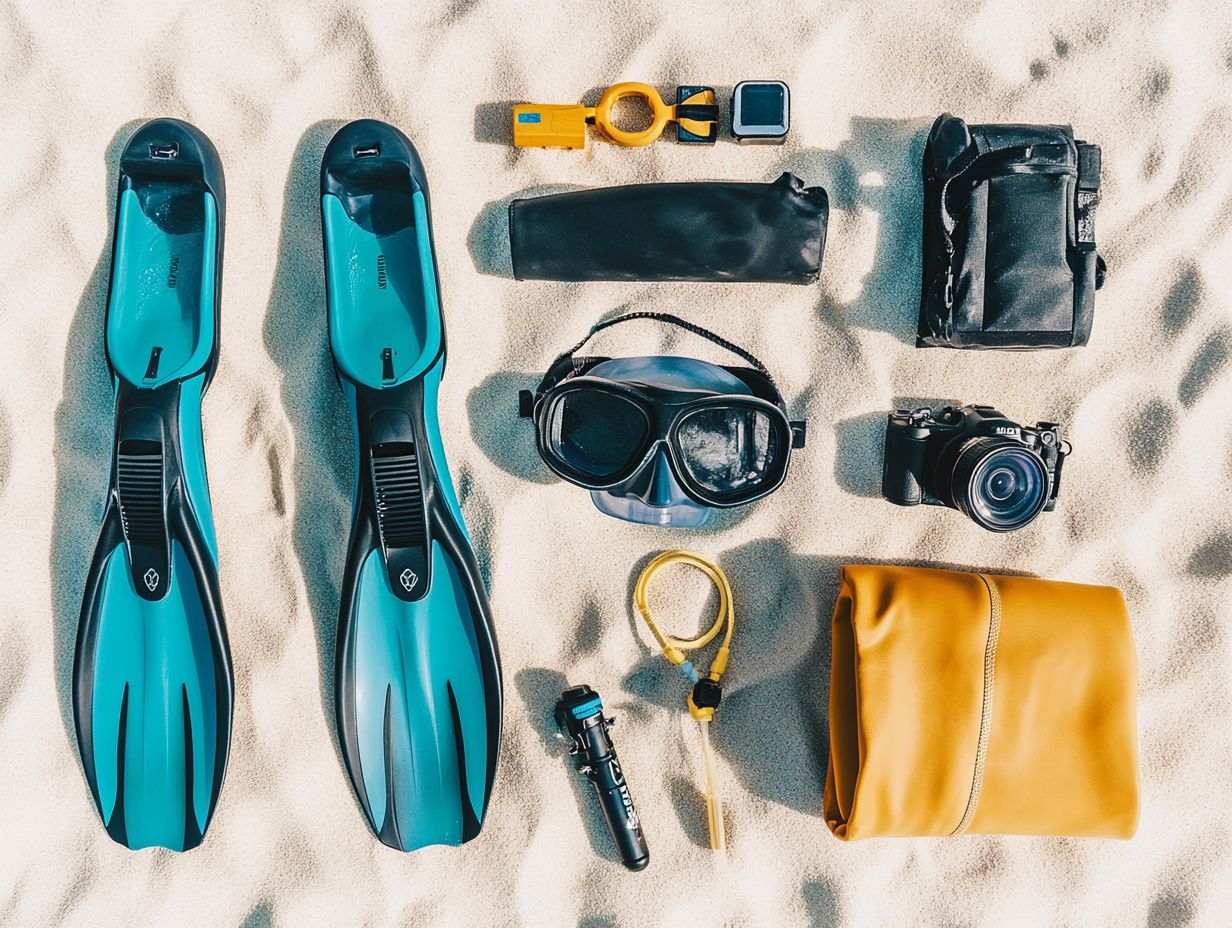
Proper maintenance of your scuba diving equipment is essential for ensuring your safety underwater. Regular checks and cleaning are essential. Also, have your gear serviced at a qualified dive shop.
Establish a cleaning routine after each dive. Focus on your wetsuits and buoyancy control devices. Rinsing your gear with fresh water is crucial; it helps remove salt, sand, and other debris that can lead to wear and tear over time.
Regularly inspect your equipment for signs of damage, like frayed straps or cracked components. These seemingly minor issues can quickly escalate into serious failures.
Promptly replace worn-out parts to maintain safety, especially for critical items such as O-rings and fin straps. Engaging professionals to service your regulators and dive computers ensures reliable performance and adheres to manufacturer recommendations.
What Are the Safety Precautions to Take When Using Scuba Diving Equipment?
Safety precautions are crucial when using scuba diving equipment. Have the right signaling tools at your disposal, maintain awareness of underwater navigation, and adhere strictly to established diving protocols.
Before diving, conducting thorough pre-dive checks is non-negotiable. Verify that your equipment is functioning properly and inspect your safety gear meticulously.
Utilizing emergency signaling equipment, like surface marker buoys and dive lights, adds an essential layer of safety especially in low visibility conditions. Familiarizing yourself with local environmental factors, such as current strengths and tidal movements, significantly enhances your overall safety.
Establish clear communication signals with your dive buddy. This fosters trust and enhances mutual awareness, both vital for navigating underwater environments securely.
How Can One Choose the Right Size and Fit for Their Scuba Diving Equipment?
Choosing the right size and fit for your scuba diving equipment is essential for comfort and safety. Ensure your gear performs optimally while allowing you freedom to move effortlessly in the water.
This is particularly crucial for must-have items like wetsuits, masks, and BCDs (Buoyancy Control Devices). A wetsuit should be snug but not restrictive, keeping water out while retaining warmth.
Your mask should fit comfortably against your face, creating a good seal without pressure points, all while providing unobstructed vision.
For BCDs, adjusting the straps for a secure fit is vital. You want to feel supported without tightness that could impede your buoyancy control. Remember, each piece of equipment impacts your comfort and overall diving safety.
What Are Some Common Mistakes to Avoid When Assembling a Scuba Diving Kit?
Assembling your scuba diving kit can be tricky. Avoid mistakes that compromise your safety and enjoyment.
One common oversight is neglecting critical emergency signaling tools:
- Whistles
- Surface markers
These can be lifesaving in unexpected situations. The organization of your gear plays a significant role in how efficiently you can access what you need while exploring the depths.
To enhance your preparation, create a checklist of essential gear and regularly inspect your equipment for any maintenance needs. Practice efficient packing techniques. This ensures every crucial item is included and remains in top condition, allowing you to fully immerse yourself in the thrill of exploration.
Frequently Asked Questions
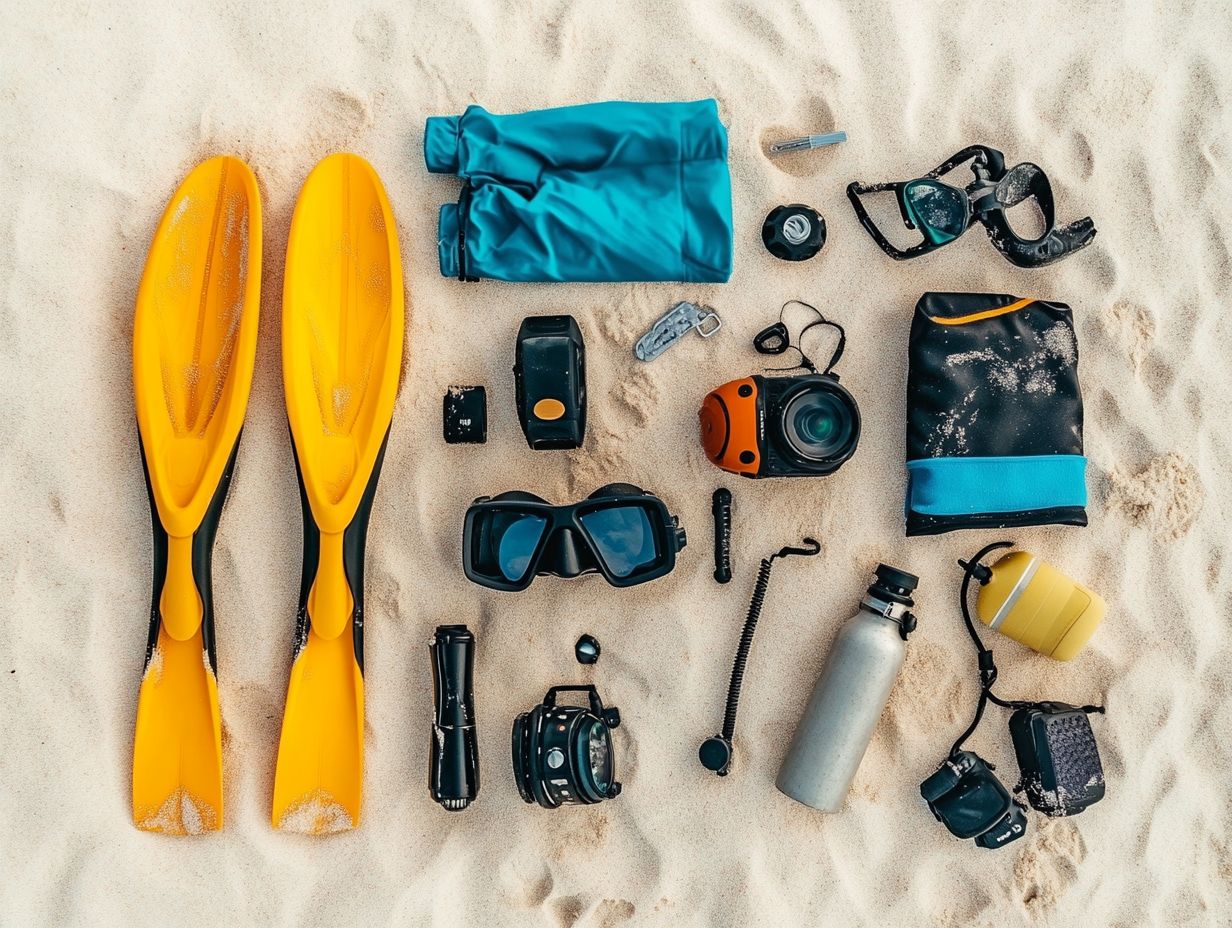
Here are some frequently asked questions to enhance your diving experience!
What are the 5 essential items for a scuba diving kit?
Ready to dive? Here are the 5 must-have items for your scuba diving adventure: a mask, fins, snorkel, regulator, and BCD (buoyancy control device).
Why do I need a mask for scuba diving?
A mask lets you see clearly underwater by creating an air pocket around your eyes and nose. It’s essential for a great diving experience!
Do I need fins for scuba diving?
Fins help you glide through the water more easily. They conserve energy and make navigating underwater simpler.
What is the purpose of a snorkel in scuba diving?
A snorkel allows you to breathe while floating face down on the water’s surface. This helps you save energy and air in your scuba tank.
Why is a regulator important for scuba diving?
A regulator controls the air flow from your tank, which is critical for breathing underwater. It ensures a steady air supply, especially during underwater exploration.
What does a BCD do in scuba diving?
A BCD (buoyancy control device) helps you manage your buoyancy underwater. It allows you to easily ascend, descend, and stay at a desired depth, making your dive more enjoyable and safe.

